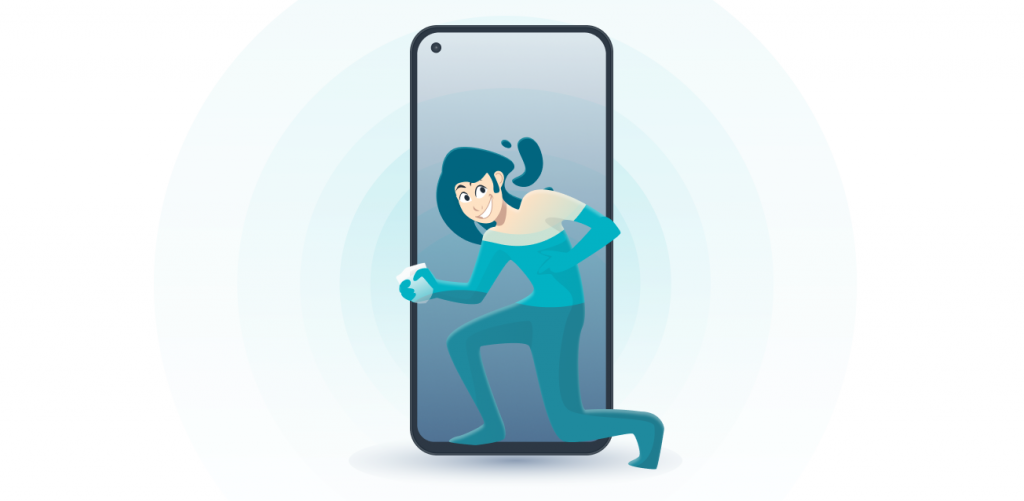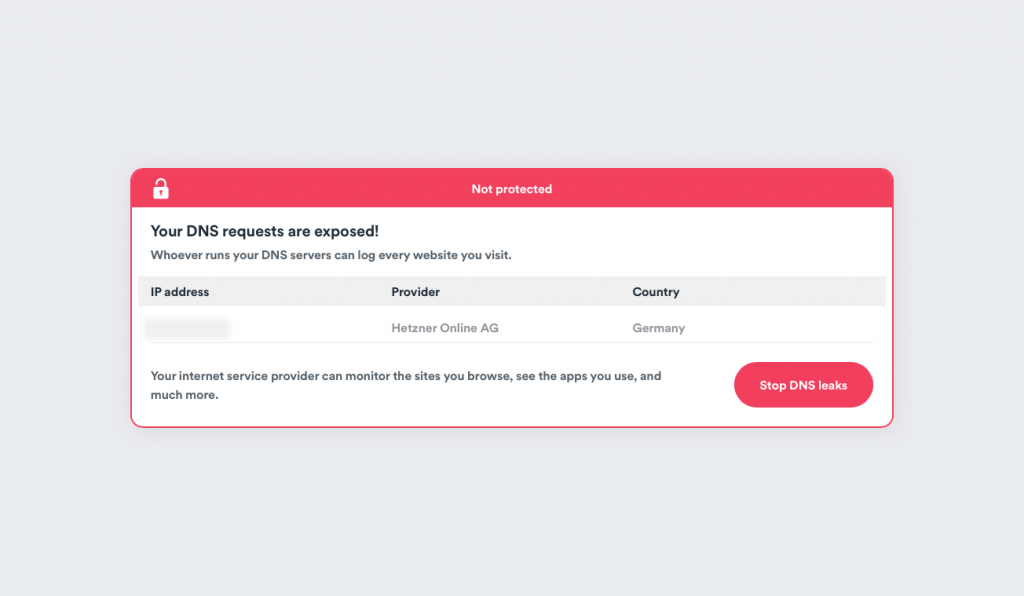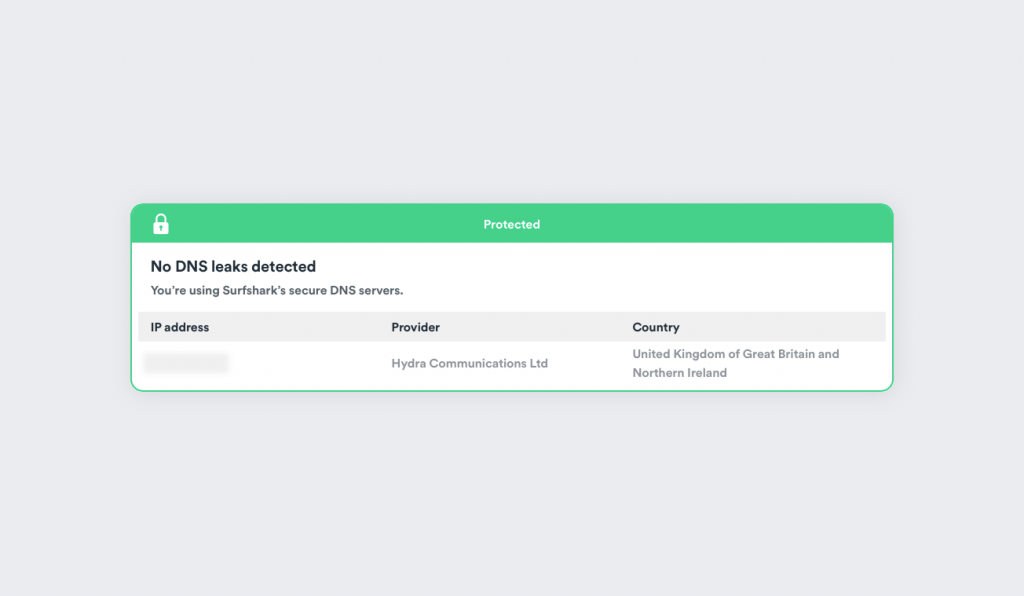How to Tell if Your Vpn Is Working
Updated: 2021, November 18 · 16 min read

When a VPN ( Virtual Private Network ) works properly, it hides your traces online. It creates a virtual tunnel between your device and the online destination you want to reach. Your data stream is then encrypted, which means your Internet Service Provider (ISP) – or anyone else – can't read what you're doing. But how do you know your VPN is doing what it's supposed to do? With a VPN test.
A reliable VPN service can help you hide your IP address, avoid Domain Name System (DNS) leaks and Web Real-Time Communication ( https://surfshark.com/features/hide-ip WebRTC) leaks. If you have any sort of VPN leak, this may indicate your VPN isn't working correctly.
4 ways to check if your VPN is working properly
When your VPN is on, there are several methods you can use to find out if it's working – checking if your Surfshark VPN works is a piece of cake. Just look for icons on your dock, toolbar, menu bar, etc.
- If the icon is grey, then your VPN is off
- If it turns green or blue, it's on
Or, you can check your VPN's status by going to Settings > VPN on any device. However, if you need more than visuals to know that your VPN is working, follow any of these methods below:
- Check for DNS leaks
- Check for IP address leaks
- Check for WebRTC leaks
- Check if you can bypass censorship
All tests are equally important as they show accurate information about your VPN. You can choose to perform just one test or all of them (for the "just in case" people).
1. Check for DNS leaks
A Domain Name System (DNS) is like a translator. It's in charge of translating a request for a website, www.yourwebsite.com, into a specific IP (Internet Protocol) number, 207.142.131.234. With these DNS requests, we can navigate the internet easily. All we need to do is remember a website's name.
Without a VPN, these requests don't go through a secure VPN tunnel. Potentially, this may leak your address and the sender's address to the websites you access. Your ISP will be able to get all this information as well.
Here's how to check for DNS leaks:
Step 1) Turn off the VPN and perform a DNS leak test
DNS requests shown as not protected:

Step 2) Turn on the VPN and perform the test again
DNS requests shown as protected:

You can even redo this test by connecting to different VPN servers. If one server on the VPN's network is secure, this doesn't guarantee that the others will be as well. Double-checking is always safer. Even on a server you don't use, a single leak may indicate trouble down the road.
2. Check for IP address leaks
Your IP address is like your address online. It's a lot more personally identifiable than a DNS address. A VPN masks your outgoing information source and the data that's transferred along from website to website. That's why it's recommended to hide your IP with a VPN.
Your real IP versus the IP your VPN provider gives you should always be different. If not, your IP is leaking. You can run this test on any device that has a VPN installed.
Here's how:
Step 1) Check your real IP address (with VPN off)

Step 2) Turn on your VPN and choose any country server
Step 3) Check your IP address again by refreshing the page (with VPN on)

Step 4) That's it; you're protected. As you can see, the IP address is different, indicating that the VPN is working correctly.
Make sure to check that the country server you connect to always matches the country displayed in the IP address checker. If not, your IP may be leaking.
3. Check for WebRTC leaks
Web Real-Time Communication (WebRTC) is a technology that lets web browsers directly communicate with one another. By using JavaScript, the WebRTC enables mobile and web browsers to run smoothly without external plugins.
These capabilities decrease the lag for specific applications when transferring files, using communication services like Skype, etc.
Many browsers use this technology by default. That's why the devices using WebRTC need to see each other's IP addresses to communicate. This might permit third-party websites to use the WebRTC to find a device's IP address.
Once someone detects an IP, they can identify the user of a device. This may all sound confusing, but checking for these leaks isn't!
Just follow these steps:
Step 1) Perform a WebRTC leak test with the VPN off

Step 2) Perform the test again with the VPN on

As you can see, this test indicates any potential WebRTC leaks in red. It also shows that the IP address is different with and without a VPN, meaning it's working well.
4. Check if you can bypass censorship
If your reason for buying a VPN was to get around government censorship or the local firewalls put up by your workplace or school, then you can check whether the VPN is working by accessing that content.
So if you connect to a VPN server and enter a previously unreachable website or service, the VPN is working!
Surfshark does not encourage using a VPN in any way that would potentially violate the Terms of Service of other service providers.
What to do if your VPN isn't working
Sometimes you may run into situations when your VPN is not working. Often, it isn't anything serious, but it's always best to check the source of the problem as soon as possible.
Here are some VPN troubleshooting tips you can try out:
- Change servers
- Change protocols
- Check if Kill Switch is on
- Check your internet connection
- Disable WebRTC (using your browser settings )
- Update your VPN app (App > Settings > Update)
- Contact the success team
Other reasons your VPN still isn't working
So, you've tried everything I recommended above, but keep getting a "VPN not connecting" problem. There are a few things that might trigger this, but I won't go into details.
Try exploring the problem further by taking a look at these handy articles. They give a more in-depth explanation on this topic and explain that
- some streaming websites may block VPN connections
- VPNs are not allowed in your country
- you've been hacked.
Don't let a faulty VPN put your data at risk
Checking if your VPN works is simple. Choose from any of the mentioned VPN tests to identify DNS, IP, or WebRTC leaks, or see if you can reach previously unreachable services. If these tests don't work with your VPN on, then something may be wrong.
Using a VPN provider like Surfshark guarantees a stable connection. It also helps you avoid data breaches and keeps you far from sneaky ISPs and hackers. I recommend that anybody who uses an electronic device stays protected and safe in the cyber world with a VPN.
Not convinced yet? Then read an independent Surfshark VPN review .
A reliable VPN is a safe VPN
Try it with a 30-day money-back guarantee
Get Surfshark
Written by
Nancy Cosio
On an adventure exploring the tech world!
How to Tell if Your Vpn Is Working
Source: https://surfshark.com/blog/vpn-test